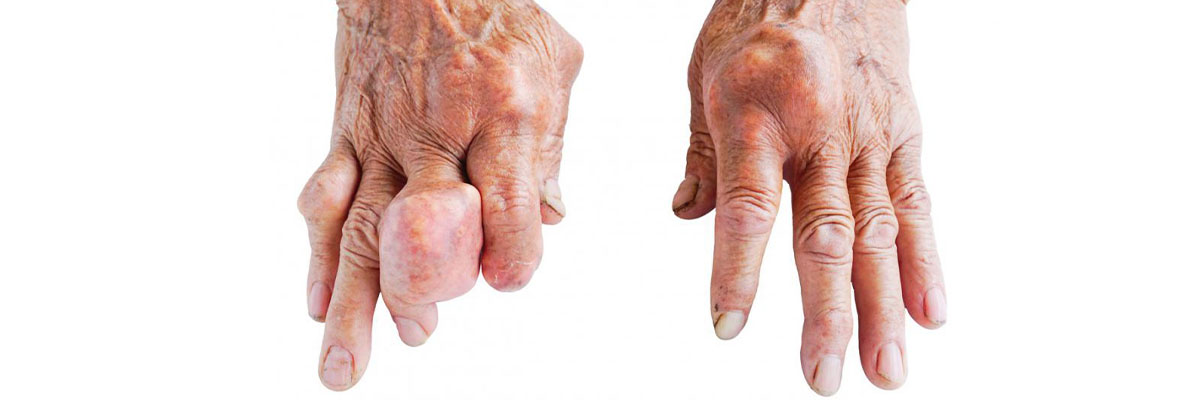Overview
Gout is a type of arthritis characterized by sudden, severe attacks of pain, redness, and tenderness in the joints, often affecting the big toe. It is caused by high levels of uric acid in the blood, which can form sharp crystals in the joints, leading to inflammation and intense pain. The condition can become chronic if not managed properly, leading to joint damage and reduced mobility over time.
Treatment for gout focuses on relieving pain during acute attacks and preventing future flare-ups by controlling uric acid levels. This typically involves a combination of medications, dietary changes, and lifestyle modifications. Medications are used to reduce pain and inflammation quickly, while long-term treatments focus on lowering uric acid levels to minimize the frequency of attacks and avoid complications.
With effective treatment and proactive management, people with gout can lead comfortable and active lives, minimizing the impact of the condition on their daily activities.
Table of Contents
When to See a Doctor

It is essential to recognize the signs of gout and seek medical care when necessary to prevent the condition from worsening and to reduce the risk of joint damage. Early intervention can lead to better management and fewer complications in the long run.
- Severe Joint Pain. If you experience sudden, intense pain in a joint, especially in the big toe, it may indicate a gout attack. Seeking medical advice can help with quick pain relief and management.
- Frequent or Worsening Attacks. Repeated episodes of pain or swelling in the joints may indicate poorly controlled gout, which can lead to joint damage. A doctor can adjust your treatment plan to prevent further flare-ups.
- Difficulty Moving the Joint. If a joint becomes difficult to move due to pain or stiffness, it may suggest the development of chronic gout or joint damage, requiring medical attention.
- Signs of Infection. In rare cases, a joint may become red, hot, and swollen due to infection rather than gout. If you experience fever along with joint pain and swelling, consult a doctor immediately.
- Persistent High Uric Acid Levels. If you have consistently high uric acid levels in your blood tests, even without symptoms, it’s a good idea to consult a doctor. High uric acid can lead to gout or kidney issues over time.
By seeking medical care promptly and managing gout actively, individuals can minimize the condition’s impact on their lives and avoid complications such as chronic pain, joint deformities, or kidney stones.
Gout Treatment Options
If left untreated, gout can lead to severe joint and tendon damage. This damage can result in a loss of normal function in the affected area, making it difficult for the individual to move or use the joint effectively. Early treatment is crucial to prevent these complications and maintain mobility and quality of life.

The following are common treatments for managing gout:
- Pain and Inflammation Reduction. When gout pain becomes intense, the primary goal is to reduce pain and swelling in the affected joint. This can be achieved through non-steroidal anti-inflammatory drugs (NSAIDs), which help decrease inflammation and provide pain relief. In cases of severe pain, doctors may prescribe corticosteroid pills or administer steroid injections directly into the joint to quickly reduce inflammation and alleviate pain.
- Splinting the Affected Joint. Applying a splint to the affected joint can help limit movement, reducing the pain caused by joint movement. This technique can be especially helpful during acute attacks, as it stabilizes the joint and minimizes irritation. In some cases, applying compression to the joint can provide additional comfort and relieve pressure.
- Surgery for Severe Cases. In advanced cases of gout, surgical intervention may be necessary, especially if there is significant joint or tendon damage, or if large deposits of uric acid crystals (called tophi) have accumulated in the joint. Surgery may involve removing these deposits, repairing damaged tendons, or even joint replacement in severe instances where function has been severely compromised.
By following these treatment approaches, individuals with gout can effectively manage pain, reduce the risk of joint damage, and improve their overall quality of life. Early and consistent treatment is essential in preventing gout from causing lasting damage to the joints and surrounding tissues.
Gout Prognosis
The prognosis for gout largely depends on early diagnosis, consistent management, and lifestyle adjustments. With effective treatment, most individuals can control symptoms, prevent flare-ups, and avoid complications. However, if gout is left untreated, it can lead to more serious health issues and permanent joint damage.
- With Proper Treatment. For individuals who manage gout with medication and lifestyle changes, the outlook is generally positive. Medications that control uric acid levels can significantly reduce the frequency of gout attacks, allowing patients to lead normal, active lives.
- Risk of Chronic Gout. Without consistent management, gout can progress to a chronic condition where uric acid crystals accumulate in the joints, forming large deposits called tophi. This can lead to persistent pain, stiffness, and joint deformities, as well as decreased mobility over time.
- Impact on Joint Health. Untreated gout increases the risk of permanent joint damage and can erode bone and cartilage in the affected areas. Over time, this can lead to decreased function in the joints and increased pain during movement.
- Kidney Complications. Elevated uric acid levels not only affect joints but can also lead to kidney stones and, in severe cases, kidney damage. This risk is higher for individuals with uncontrolled gout or chronically high uric acid levels.
Overall, with regular monitoring, adherence to treatment, and preventive measures, people with gout can maintain their joint health and prevent long-term complications. By managing uric acid levels and following medical advice, individuals can achieve a favorable prognosis and reduce the risk of severe outcomes associated with untreated gout.


